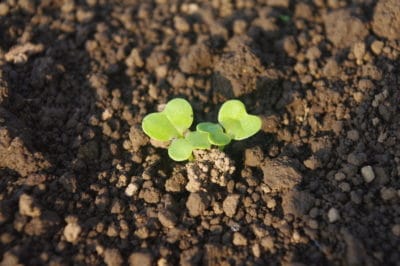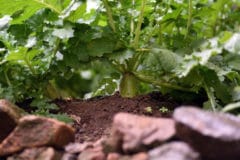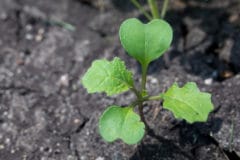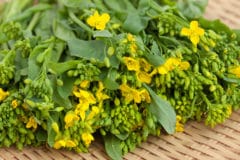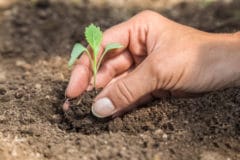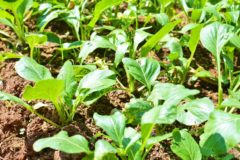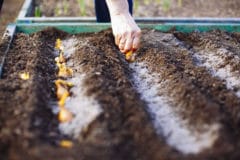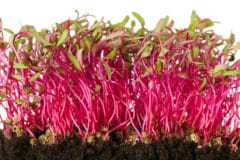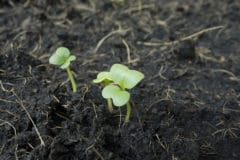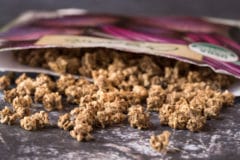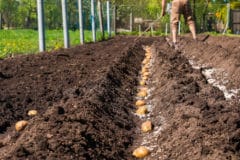The Best Turnip Varieties for Greens
Some turnip varieties are popular for their roots while others are popular for their greens. Still other varieties are popular for both their roots and greens. Those that are grown for their greens include:
- Topper – slow to bolt, ready for harvest in 45 days
- Alltop – small roots, large bunches of leaves that regrow quickly, ready to harvest in 45 days
- Seven Top — small roots, large crop of leaves that regrow quickly, ready to harvest in 40 days
- Shogoin – long standing popular variety, produces fist-sized roots if thinned but more popular for leaves, greens ready to harvest in 30 days, roots in 70 days
Planting Turnip Greens in the Fall
Wait to plant your turnip greens until August or September when daytime temperatures remain below 75°F (24°C). You can plant them where you were growing your onions, beans, sweet corn, or beans. Because greens grow so quickly, you can plant a new crop every two weeks or so up to seven or eight weeks before the expected date of the first hard freeze in your area.
Planting Turnip Greens in the Spring
Wait to direct sow your turnip seeds in the garden until two to three weeks before the last frost date for your area. The soil temperature should be above 40°F (4°C). As in the fall, you can plant a new crop every two weeks or so up until seven or eight weeks before you expect that temperatures will climb above 75°F (24°C).
Planting Turnip Greens
Turnip greens prefer loamy or sandy soil with a pH of 5.5 to 6.8. They need a well-drained spot with full to partial sun.
You will need to prepare the soil before your spring planting. Since you are growing your turnips for greens rather than roots, you only need to loosen the soil to a depth of about 10 inches. Removing stones and breaking up clumps of dirt is still a good idea, though. Then, work 2 to 3 inches of aged manure or compost into the soil before planting.
Using a planter, broadcast the seeds on top of the soil with three to 20 seeds per foot in rows that are 12 inches apart. Use a rake to cover the seeds with 1/2 inch of soil.
When you are growing your turnips for greens, you can thin your seedlings to 2 to 3 inches apart when they are 4 inches tall, but it’s not really necessary.
Growing Turnip Greens in Containers
Container gardening is not the best choice for turnips if you are growing them for their roots. If you are growing turnips for greens, though, you can choose a variety of containers. Use a potting soil for vegetables or herbs and vegetables, and make sure that the container drains well. Top soil does not drain as well as potting soil, and it is too heavy for container gardening.
